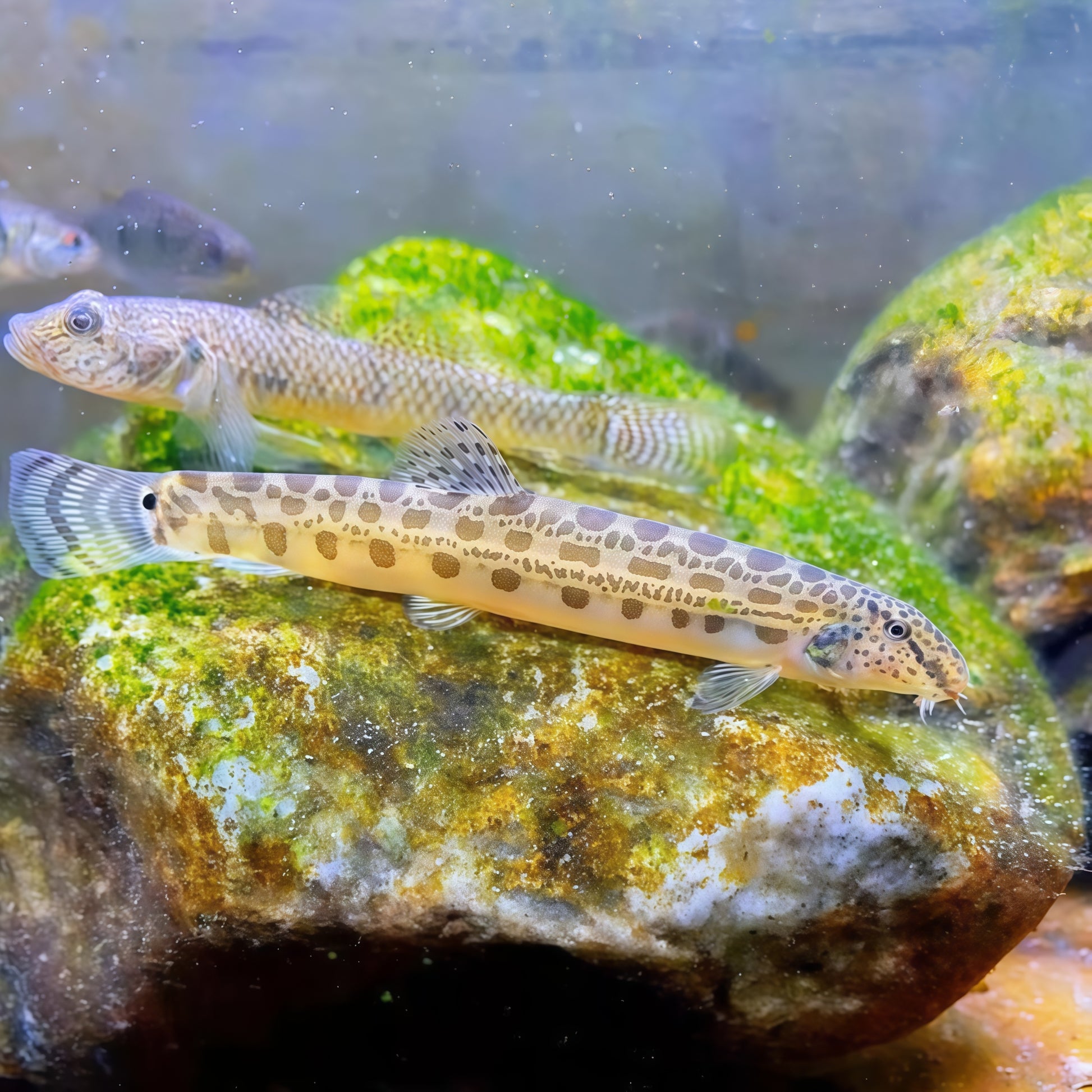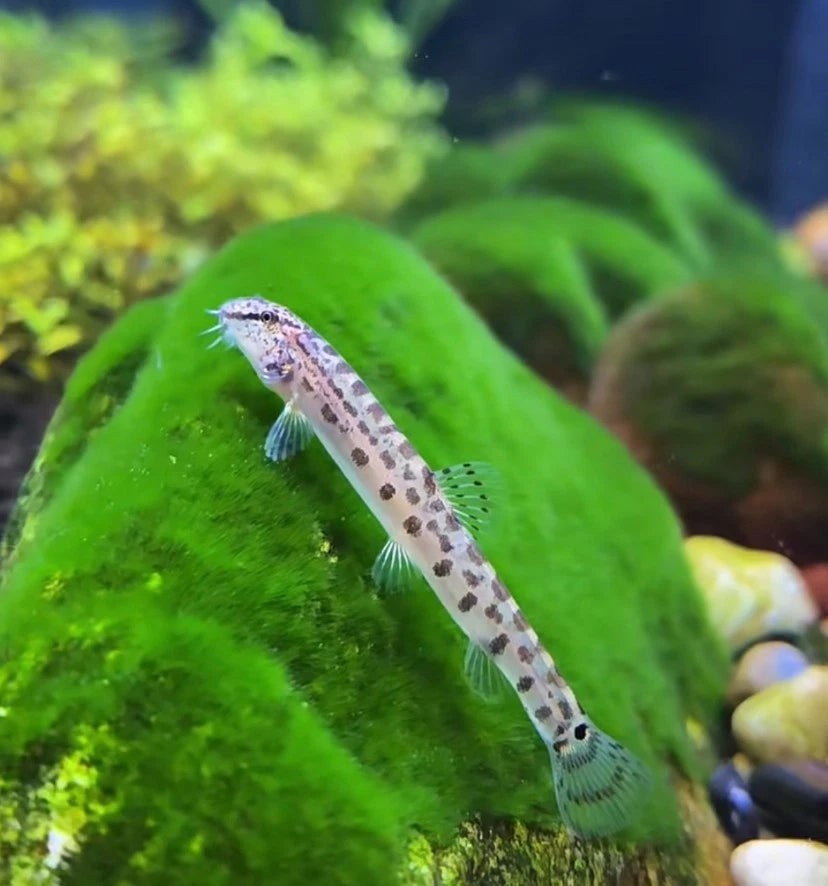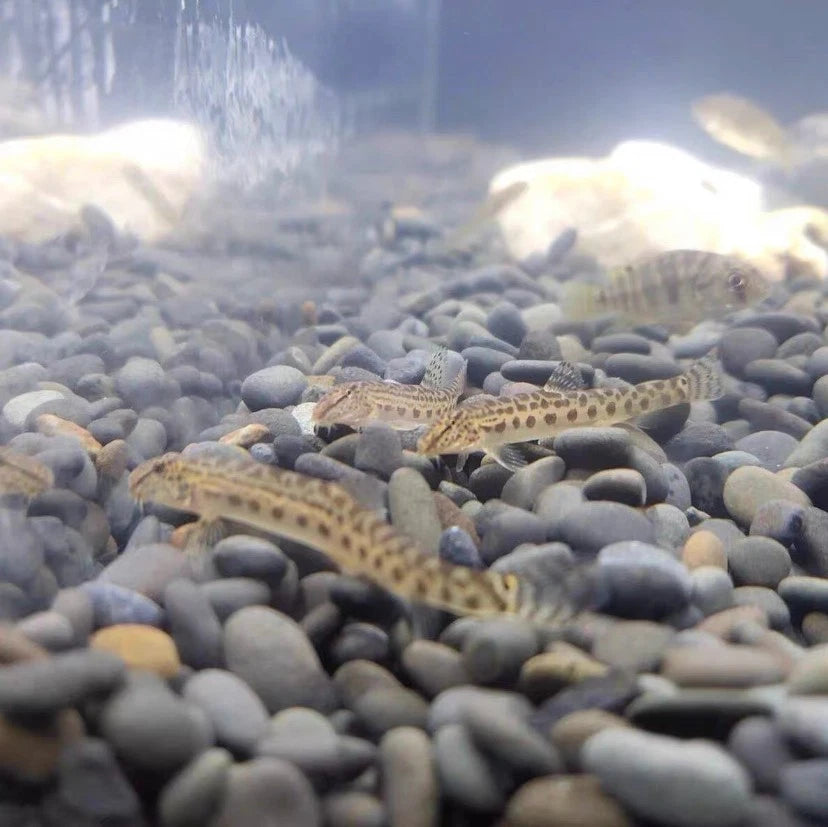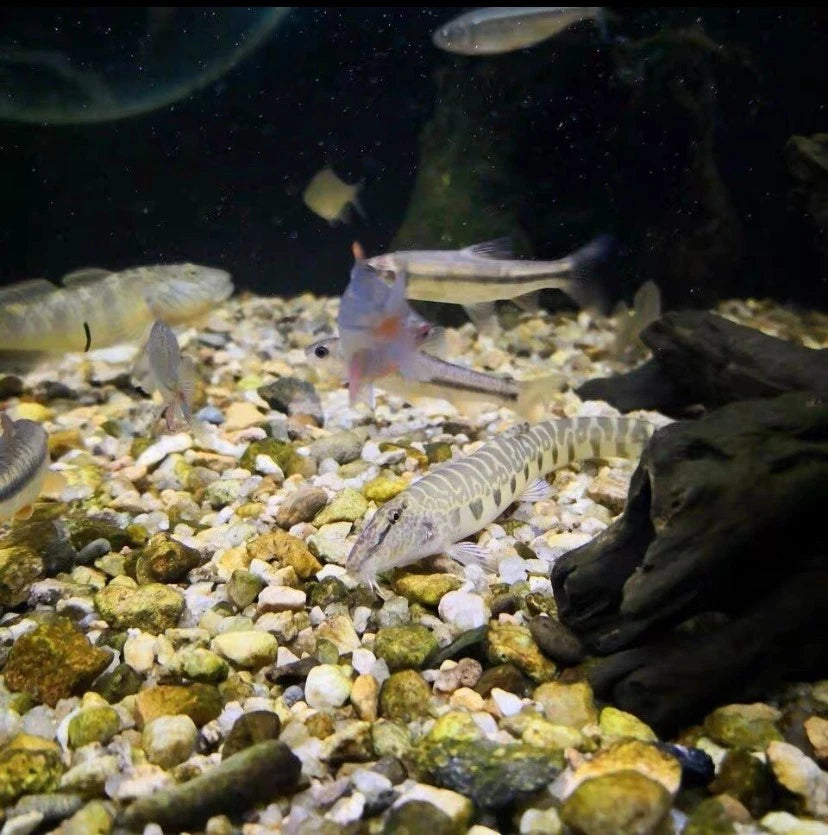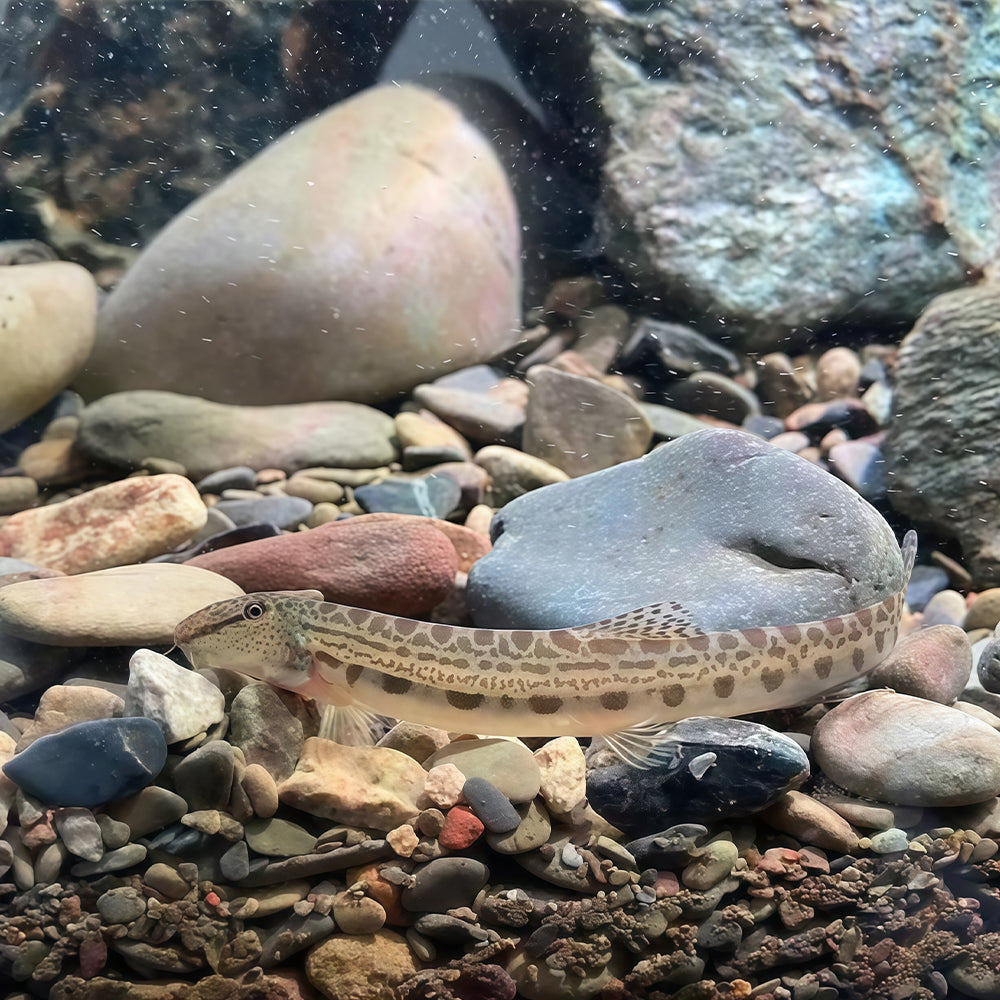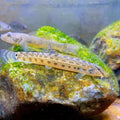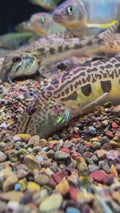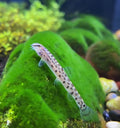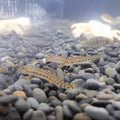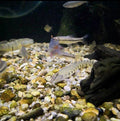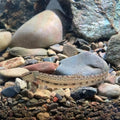Siberian Tiger Loach (Cobitis sinensis) – Siberian Spiny Loach (~7–10 cm / ≈3–4″)
-
Estimated Delivery:Jan 16 - Jan 20
-
UPS Next Day Air Shipping Charges 65$
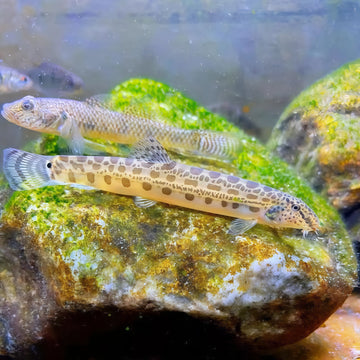
Siberian Tiger Loach (Cobitis sinensis) – Siberian Spiny Loach (~7–10 cm / ≈3–4″)
📦 Description
The Siberian Tiger Loach (Cobitis sinensis), also known as the Siberian Spiny Loach, is a sleek, active bottom-dweller reaching around 7–10 cm. With distinct dark dorsal and lateral stripes—reminiscent of a tiger pattern—it is native to freshwater habitats across Southern China and Taiwan. This species is a peaceful, social scavenger that forages along the substrate and middle levels, searching for algae, detritus, and sinking food. When kept in small groups, it displays playful behavior and pairs may form. Ideal for community tanks with clean, cool water.
🧰 Care Instructions
-
Tank Size: Minimum of 20 US gallons (~75 L); longer footprint preferred for swimming space and temperature stability.
-
Water Flow & Oxygen: Low to moderate flow is sufficient, but well-oxygenated water is important.
-
Water Conditions:
-
Temperature: 18–22 °C (65–72 °F), not exceeding ~24 °C
-
pH: 6.5–7.5
-
Hardness: Soft to moderately hard (~2–12 °dGH)
-
-
Substrate & Decor: Fine sand or smooth gravel substrate. Provide driftwood, smooth stones, and leafy décor to mimic natural bottom structure and offer hiding spots.
-
Diet: Omnivorous scavengers. Accept sinking pellets, algae wafers, frozen or live foods like bloodworms and daphnia, and occasional blanched vegetables. Less dependent on algae than hillstream types.
-
Social Behavior: Peaceful and sociable; keep in groups of 3 or more. They may pair off in adulthood. Compatible with other peaceful bottom and mid-level species.
-
Maintenance: Frequent partial water changes (20–30 % weekly) to maintain water quality. Avoid sharp substrate and maintain a secure tank lid—this species may attempt to jump.
-
Compatibility: Suitable for community setups but avoid pairing with very small shrimp or snails due to scavenging habits.

